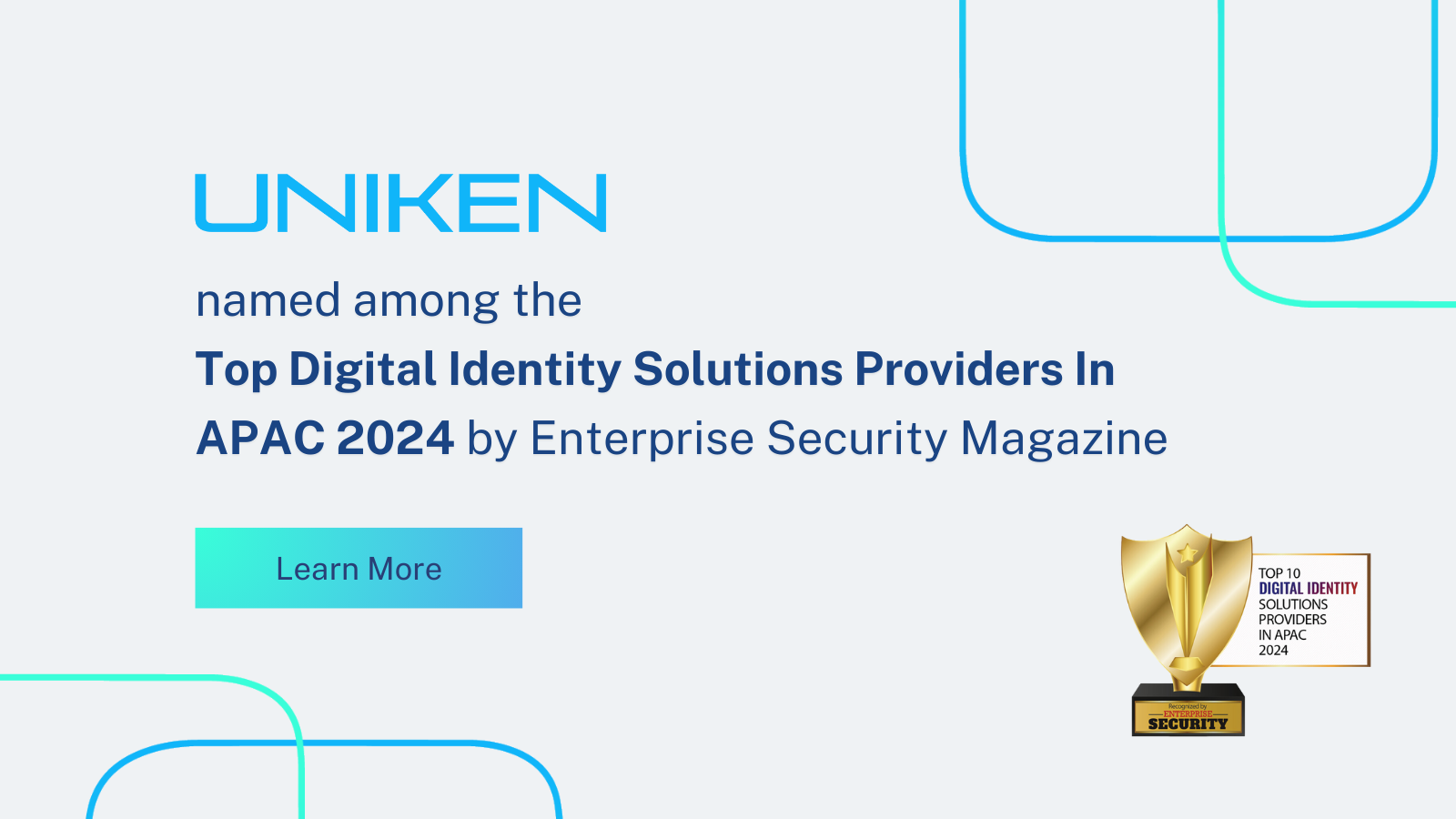Certainty in Identity: Why Settle for Less for Your Business or Your Clients?
Accepting less than certainty in identity unnecessarily opens the door to increasingly sophisticated cyberthreats. With today’s tech and know-how, it’s time to do better.
Most of your clients would likely not choose to purchase a product if they knew up-front that it was not designed to be completely effective, particularly for higher risk situations—for instance, an alarm system they knew would sound only 95% of the time or a car braking system they knew would fail one day each month. Yet, when it comes to identity and access management (IAM), clients unfortunately don’t usually get to choose, and organizations continue to invest in identity verification, authentication, and security systems that are clearly not designed to be completely effective at ensuring client identities, accounts, and transactions are protected.
Despite advances in technology and industry expertise that now make it possible to design passwordless, deterministic identity and security systems that provide certainty, both organizations and security providers still choose to use outdated technology and legacy probabilistic systems that commonly depend on passwords, one-time passwords (OTPs), and other knowledge-based authentication (KBA) methods with widely recognized vulnerabilities. The familiar username and password coupled with an OTP delivered to a client’s mobile phone is a typical example of a probabilistic authentication system. In these systems, security relies on the probability that a user who correctly provides both the password for the given username and the OTP is the actual client. These probabilistic systems evolved from the early days of the internet and are insufficient to secure today’s digitally connected world and defend against increasingly prevalent and sophisticated cyberthreats.
To outpace today’s rapidly developing threat environment requires a paradigm shift. The IAM industry is poised for a transformative move away from these traditional identity and security models, and client-centric organizations and their clients should no longer accept the uncertainty inherent in these systems. Embracing a passwordless, deterministic approach (one that offers 100% algorithmic certainty every single time) offers a fraud protection revamp that is urgently needed to combat cybercrime in today’s complex and ever-evolving threat landscape.
The Evolving Threat Landscape
The frequency and sophistication of threats to identity and access are escalating. As the internet of things expands, data repositories grow, and the number and value of digitally secured assets increase, opportunities for threat actors abound. Both organizations and their clients are in a seemingly endless race to keep ahead of threat actors intent on nefarious activities such as credential theft, identity fraud, account takeover, and data breach.
Meanwhile technological advances in areas such as generative artificial intelligence (AI) and machine learning offer the potential for threat actors to advance and automate their capabilities, boosting the effectiveness of social engineering, phishing, malware, and other attack vectors. In particular, AI-generated deepfake image, video, and voice-cloning threats loom large with high-profile news reports about deepfake scams offering alarming evidence of the dangers ahead.
When successful, these threats result in catastrophic consequences for organizations. Costs can be staggering, from multimillions in direct monetary costs to damaging brand trust, market confidence, client relationships, and financial performance. In this challenging and high-risk threat environment, the success of client-centric organizations relies on certainty in identity verification, authentication, and client interactions.
The Problem with Probabilistic Security
The intrinsic limitation of using probabilistic identity and security models to authenticate clients and transactions is the very reliance on probabilities—or the likelihood that something is true, e.g., the individual providing a correct response is the client and not a threat actor. There is inherent uncertainty in this risk-based approach. The result leaves the possibility of both false positives and false negatives; individuals may be incorrectly identified as a security threat, e.g., by forgetting a password, or may not be flagged when they pose a real threat.
Compounding the problem, the basis of traditional probabilistic security is the password, despite the well-acknowledged vulnerabilities that make passwords highly susceptible to credential compromise through many attack vectors. Passwords are cumbersome for individuals to manage, resulting in poor password hygiene practices, such as not updating passwords regularly or using weak, easy-to-guess, or recycled passwords. In the case of password recycling, for instance, it has been reported that up to 65% of individuals reuse passwords. Password recycling drives the cascading threat of credential stuffing, particularly when people use the same username and password on critical, high-security websites like their bank as they do on less consequential sites with weaker underlying security, e.g., a gardening blog forum. When the low-security sites are breached, hackers use those credentials to gain access to high-priority targets, such as banking sites.
Although its execution in these probabilistic systems can complicate the customer experience, multifactor authentication (MFA)—frequently in the simplest form of two-factor authentication (2FA)—is often used to bolster security and guard against compromised passwords. Yet, here again, the traditionally used 2FA methods, like SMS-based OTPs, third-party authenticator apps, and security challenge questions based on personally identifiable information (PII), are vulnerable to threats, such as SIM swapping, mobile malware, adversary-in-the-middle (AiTM), and social engineering attacks.
Additionally, the various authentication methods organizations employ often differ across channels, e.g., SMS OTPs for websites but security challenge questions for the contact center. This can create added friction for clients who must navigate these different methods while also benefitting threat actors who seek to exploit the vulnerabilities of the weakest link in the system.
These legacy systems also commonly leave a large burden of defense to clients, who must ensure the protection of their passwords and other KBA data as well as the devices and network connections they use when accessing the systems. Shifting to a passwordless, deterministic approach to security can alleviate this burden from clients while delivering certainty in identity and elevating the customer experience.
The Path to Certainty in Identity
The path to certainty in identity requires closing the gaps in traditional probabilistic systems to secure the full customer journey, including devices, applications, and network connections. The principles of security and privacy by design are the starting place. This means that the security of a system and the privacy of its users’ PII are core business requirements in the design, not technical features or add-ons. Adhering to these principles ensures security and privacy are built into the system, freeing clients from shouldering the burden of defense. It can be achieved by adhering to a zero-trust security model and developing an orchestrated security flow within a closed, tightly integrated system that uses a layered, defense-in-depth strategy to prevent device, network, application, and credential compromise. A deterministic approach is key because it aims to eliminate probabilities by relying on binary data—a clear true or false—which provides accuracy and ensures a robust, dependable model of authentication.
At Uniken, product design and innovation follow this path. Uniken’s REL-ID platform integrates into an organization’s environment, placing the organization’s own mobile app at the center of a deterministic, zero-trust security approach that provides protection against malicious and unauthorized access from compromised networks, devices, and identities. REL-ID incorporates security that addresses endpoint threat detection, identity verification (IDV), authentication, and channel security solutions all in one, comprehensive platform. Passwords and other KBA methods are unnecessary. REL-ID enables six-layer, frictionless mutual MFA between the client and the organization that is invisible to the client and consistent across all channels. The MFA capability includes authentication of identity combining state-of-the-art biometrics, app fingerprinting, device fingerprinting, and a cryptographic private-private keypair that assures with algorithmic certainty that the client is the user interacting with the organization.
The result: Certainty in identity for every client interaction as well as a fast, frictionless, consistent omnichannel customer experience. Even the most complex and sensitive service requests and transactions can be safely and seamlessly actioned over any channel, at any time, from any location. It’s the outcome today’s client-centric organizations and their clients need. And it does beg the question, why settle for less?
About Uniken
Uniken accelerates possibilities for client-centric organizations by creating certainty in identity and security while delivering amazing customer experiences. An innovator and pioneer in cybersecurity, Uniken serves customers of all sizes, worldwide, across a variety of industries.
Discover more about Uniken’s REL-ID Security Platform: The Platform of Possible



